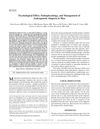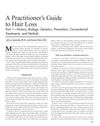finasteride progress and im happy with the results Progress Pictures 4/26/2025
A 30-year-old shared positive results after 6 months of using 1mg oral finasteride daily for hair loss, without minoxidil. Hair loss stopped around month 2, and noticeable regrowth began around month 4.5, with no side effects reported.
View this post in the Community →
Similar Community Posts Join
6 / 1000+ resultscommunity Why you may be taking Dutasteride wrong
Dutasteride is more effective than finasteride for hair loss, with optimal dosing at 0.5mg once or twice a week to minimize side effects. Topical application may further reduce side effects while effectively lowering scalp DHT.
community My barber is seriously making me lose hope
This conversation is about a user struggling with hair loss who has been told by their barber that minoxidil does not work and the only solution is to accept it. Other users have encouraged them to continue using finasteride and minoxidil, as well as look for another barber, since these treatments are scientifically proven to be effective in combating hair loss.
community 16 months. Just a tough roller coaster. But the pictures speak for themselves. Propecia 1 mg topical minoxidil twice a day
The user experienced significant hair regrowth using Propecia (finasteride) 1 mg and topical minoxidil twice a day over 16 months, despite initial shedding. The user no longer needs a hair transplant and reports no side effects from the treatment.
community High Estrogen causing hair loss?
A 24-year-old male using topical finasteride for hair loss is experiencing thinning despite treatment and has high estrogen levels. He is seeking advice on whether high estrogen could be causing hair loss and how others with high estrogen levels have addressed it.
community Why use finasteride when you can do handstands and take vitamins instead! (☞^o^) ☞
This conversation was a satire post about hair loss treatments, and included a range of different treatments from biotin to handstands. Finasteride and Minoxidil were specifically mentioned as potential treatments that have scientific evidence to support their effectiveness.
community What an amazing time to be alive
The post discusses a user's experience with hair loss treatments, specifically topical finasteride, minoxidil, and micro-needling, and their plan to switch to oral versions and add Dutasteride. The conversation includes various responses, with some users sharing their own experiences and side effects, and others expressing desire for a more permanent hair loss solution.
Related Research
6 / 1000+ results
research The Childbearing Years: Hair Diseases
Different hair diseases affect people during childbearing years, with treatments ranging from medication to psychological support.

research Artificial Intelligence in Patient Education for Androgenetic Alopecia: A Comparative Study of ChatGPT, Gemini, and Deepseek R1
ChatGPT 4.0 and Gemini 1.5 Flash are effective for educating patients about androgenetic alopecia, while Deepseek R1 is less reliable.

research Medical Management Options for Hair Loss
The document concluded that FDA-approved treatments like minoxidil and finasteride are effective for hair loss, while the effectiveness of natural remedies and other non-approved treatments is not well-supported by evidence.

research Psychological Effect, Pathophysiology, and Management of Androgenetic Alopecia in Men
Minoxidil and finasteride can slow hair loss and stimulate regrowth, but won't restore all lost hair or reverse complete baldness.

research A Practitioner's Guide to Hair Loss Part 1: History, Biology, Genetics, Prevention, Conventional Treatments, and Herbals
The document concludes that hair loss is influenced by genetics and other factors, and while treatments like finasteride can help, they have limitations and side effects.

research Frontal Fibrosing Alopecia: A Review
Frontal Fibrosing Alopecia's cause is unclear, affects mainly postmenopausal women, and current treatments focus on stopping hair loss rather than regrowth.